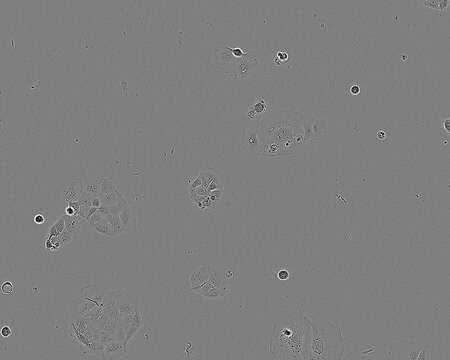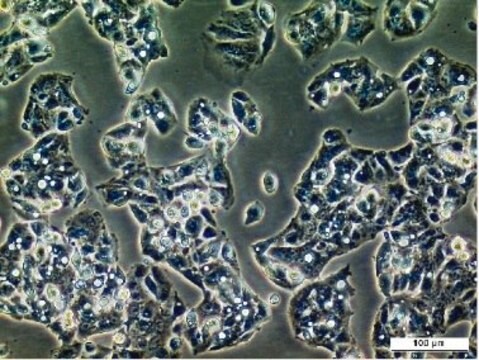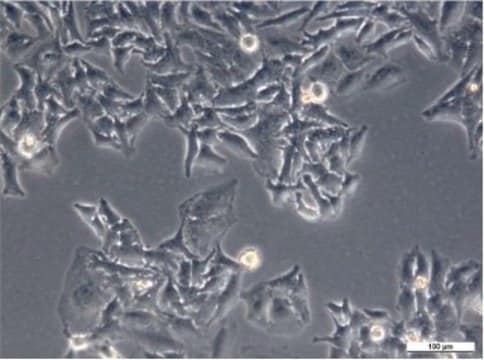Recommended Products
biological source
mouse blood
description
Mouse leukemic monocyte-macrophage
growth mode
Semi-adherent
karyotype
Not specified
morphology
Macrophage
products
Lysozyme
receptors
Immunoglobulin and complement
technique(s)
cell culture | mammalian: suitable
relevant disease(s)
cancer
shipped in
dry ice
storage temp.
−196°C
Related Categories
Cell Line Origin
Mouse leukaemic monocyte-macrophage
Cell Line Description
Established from an ascites of a tumour induced in a male mouse by intraperitoneal injection of Abselon Leukaemia virus (A-MuLV). Cells with pinocytose neutral red and phagocytose zymosan. Cells capable of antibody-dependent lysis of sheep erythrocytes and tumour targets. Growth inhibited by LPS (0.5ng/ml).
Application
RAW 264 Cell Line from mouse has been used:
- to study the anti-inflammatory effect of galectin-3 on RAW 264 macrophages which are stimulated with lipopolysaccharide
- to study the effect of titanium particles on progranulin (PGRN) expression in RAW 264 cells
- to study the effects of a nutritional supplement on interferon-γ (IFN-γ)-induced expression of macrophage chemoattractant protein-1 (MCP-1) and intercellular adhesion molecule-1 (ICAM-1)
Culture Medium
EMEM (EBSS) + 2mM Glutamine + 1% Non Essential Amino Acids (NEAA) + 10% Foetal Bovine Serum (FBS) or DMEM + 2mM Glutamine + 10% Foetal Bovine Serum (FBS).
Subculture Routine
Split sub-confluent cultures (70-80%) 1:3 to 1:6 i.e. seeding at 2-4x10,000 cells/cm2; 5% CO2; 37°C. Remove the cells mechanically. Cells are semi-adherent, i.e. some cells grows in suspension, some loosely attach to the surface and others flattened out and attach to the flask. Cells should not be allowed to overgrow and become confluent as this can lead to loss of the flattened adherent cell characteristic.
Other Notes
Additional freight & handling charges may be applicable for Asia-Pacific shipments. Please check with your local Customer Service representative for more information.
Certificates of Analysis (COA)
Search for Certificates of Analysis (COA) by entering the products Lot/Batch Number. Lot and Batch Numbers can be found on a product’s label following the words ‘Lot’ or ‘Batch’.
Already Own This Product?
Find documentation for the products that you have recently purchased in the Document Library.
Our team of scientists has experience in all areas of research including Life Science, Material Science, Chemical Synthesis, Chromatography, Analytical and many others.
Contact Technical Service




